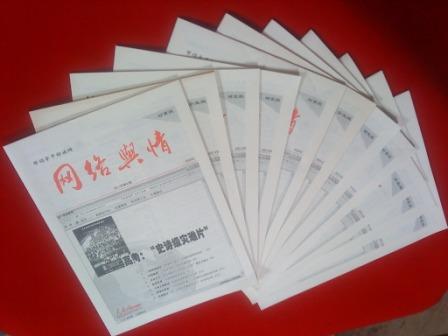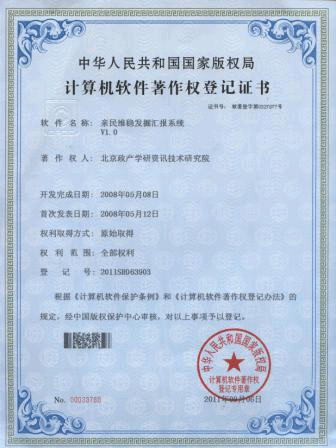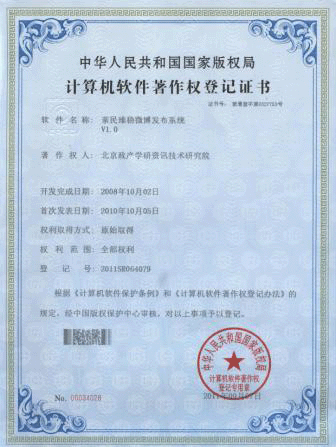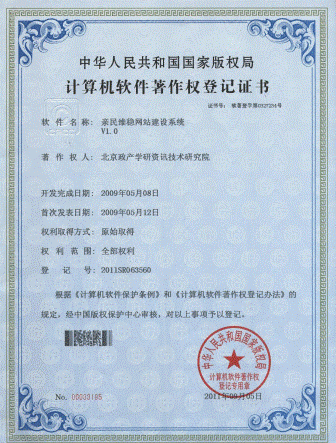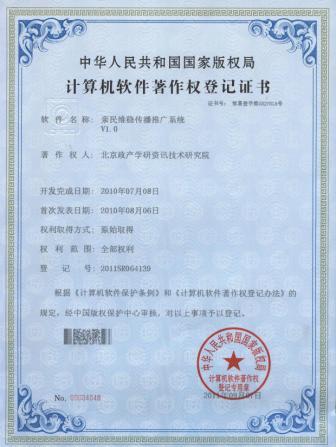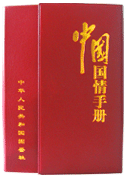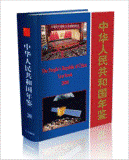亲民维稳热点推荐
- ·上海民办教育系列探索 扶持中规范--
- ·学校建好却被闲置 广州楼盘公校为何
- ·选专业痴心不改不服调剂 湖北23名高
- ·“高考阅卷师冒死揭露内幕”系“旧帖
- ·武警八年守卫考试院 见证高考录取变
- ·衔接班暑假升温 “影子教育”盛行的
- ·高考贫困学子:通往目标的路,不止一
- ·中国青年报:公务员是纳税人供养的--
- ·校车过渡期不让学生无车可乘--亲民维
- ·河南高校录取通知书被强迫改EMS快递-
- ·教育部部署2012年庆祝教师节活动安排
- ·乡村教师走出大山 意外实现“大学梦
- ·云南教育厅厅长罗崇敏卸任演讲:我改
- ·看民国语文教材:甄嬛体还教戒赌存钱
- ·这个暑假留守儿童不孤单--亲民维稳网
- ·小一新生个性足 开学首日和老师“提
即刻使用亲民维稳解决方案!

发掘汇报软件
使用亲民维稳全套解决方案邀请
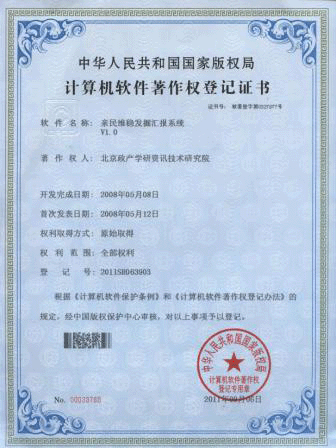
亲稳发掘汇报系统
从种姓制度看印度教育--亲民维稳网络舆情监测室
2013-02-07
伴随20世纪90年代末印度经济的崛起,其高等教育问题日趋引起许多国家学者的广泛关注。学者们注意到,在过去近两个世纪,尤其自1947年印度独立以来的60多年里,印度高等教育体系从无到有、从小到大,已经成长为“高等院校数量世界第一(约2万多所)和在校生人数世界第三(1120多万人)”的庞大的高等教育系统。它有着悠久的历史和文化传统,不论在艺术还是科学方面都曾闪粗过灿烂的光辉.但是,由于长期受到官僚体制、殖民统治和种姓制度的影响,印度又有着屈辱的历史和愚昧的传统。所有这些,特别是种姓制度,都深深地影响着印度今天的教育发展。
With the 1990 s, the rise of India's economy,The higher education problem is caused wide attention of scholars in many countries.Scholars pay attention to,In the past nearly two centuries,Especially since the 1947 years since the Indian independence of sixty years,India's higher education system from scratch/size,Has grown to"Number of colleges and universities of the world first(About more than 20000)The number of students and the world's third(More than 1120 people)"The higher education system of large.It has a long history and cultural tradition,Whether in art or science have flash coarse a brilliant light. But,Due to the long time by bureaucracy/Colonial rule and the influence of the caste system,India also has a history of humiliation and folly tradition.All of these,Especially the caste system,There is a deep affect India today's education development.
种族制度和印度教育的概况 Racial system and the general situation of education in India
印度种姓制度造成“贱民”生活苦难种姓制度是印度社会特有的一种等级制度,它是阶级压迫和民族压迫的产物。按照这种制度,每个人一出生就属于一个特定的等级,职业也是世袭的,各等级间界限严格,不能通婚,不能交往,甚至不能同井而饮、同席而坐。即种姓是指职业世袭、内部通婚、不准外人参预的社会等级(身份)集团。种姓在古梵语中称“瓦尔纳”,意为“肤色”、“品质”;印地语叫“阇提”,意为“种”、“出生”;在中国古代文献中意译为“种姓”;葡萄牙人称为“卡斯特”,意为“族姓”、“出身”。早在奴隶制时期,印度社会即已分四大等级:“婆罗门”(僧侣)掌握神权,主持祭祀,是人民精神生活的统治者;“刹帝利”(贵族、武士),掌握政治、军事实权,是古印度国家的世俗统治者;“吠舍”(农牧民、工商业者),多属被剥削的小生产者;“首陀罗”(奴隶、杂工、仆役),是没有任何权利的被压迫、被剥削者。这种制度主要盛行于印度教教徒中。被印度教奉为圣书的《摩奴法典》,把这四个等级的起源归于梵天(造物者)身体的四个部分,即婆罗门出自他的口中,刹帝利出自他的双臂,吠舍出自他的双腿,首陀罗出自他的双脚。印度教的经典还认定前三种等级的人是可以获得“再生”的,而首陀罗则没有这种权利。
The caste system is a kind of special Indian society rating system,It is class oppression and ethnic oppression of the product.In this system,Everyone is born to belong to a particular level,Professional is hereditary,The strict limits between level,Can't marry,Can't communication,Can't even with well and drink/To sit down together at the table.Namely caste refers to professional hereditary/Internal marriage/No idea who the social hierarchy(identity)group.Caste in ancient Sanskrit said"varna",meaning"color"/"quality";Hindi is"Which carry",meaning"Kind of"/"Was born";In ancient Chinese literature for free translation"caste";The Portuguese called"Lancaster",meaning"Family name"/"born".As early as in slavery period,Indian society that is already in four big level:"brahman"(monks)Master theocratic,Host sacrifice,Is the ruler of the people's spiritual life;"kshatriya"(noble/warrior),Master political/Military power,Ancient India is the country's secular rulers;"Barking up"(farmers/businessmen),There are many small producer of the exploited;"sudra"(slaves/factotum/ministers),There is no any rights of the oppressed/It was.This system mainly prevailing in the Hindu.Is the Hindu holy books as the[Manu code],The four levels of origin to brahma(creator)Four parts of the body,That is brahman from his mouth,Kshatriya from his arms,The pieces come from his legs,Sudra from his feet.The Hindu classic also recognized the first three level can be achieved"regeneration"of,And the sudra do not have this right.
随着阶级分化和社会分工的不断发展,后来在恒河流域的一些王国里,原来的四个等级又被细分为许多等级(亚种姓)。结果种姓日益增多,制度日趋复杂。在原来的种姓之外,又出现大批“不可接触者”,即最受歧视和压迫的“贱民”,他们绝大多数人没有土地,没有权利,只能在农村当佃、雇农,或在城市从事“不洁”行业,如洗衣、制革、屠宰、清扫等,他们的人身和用过的东西都被认为是“龌龊”的,他们不能同其他种姓的人接触,不能进入寺庙、学校等公共场所。现代的种姓制度共分三大等级,即大体由原来的婆罗门、刹帝利和吠舍所组成的高级种姓,由原首陀罗组成的低等种姓以及被称为“贱民”或“不可接触者”的第三等级。
Along with the class differentiation and the development of social division of labor,Later in the Ganges river basin of some of the kingdom,The original four grade was subdivided into many levels(Subspecies name).Results the caste is increasing,System is getting more and more complicated.In the original caste outside,Appeared a large number of"Not contacted",That is the most popular of discrimination against and oppression"pariah",They most people have no land,Have no right to,Only in the countryside when conditioning/peon,Or in the city is engaged in"Don't clean"industry,Such as laundry/leather/slaughter/Cleaning, etc,Their personal and used things are considered"dirty"of,They can't with other caste of people to contact with,Could not enter the temple/Schools and other public places.Modern caste system is divided into three levels,That is roughly from originally of brahman/Kshatriya and barking bits of composed of senior caste,The original sudra composed of low caste and called"pariah"or"Not contacted"Third grade.
印度教育制度可分为四个阶段,分别是古印度时期、殖民统治时期、印度独立后直至20世纪60年代、60年代后。
India education system can be divided into four stages,Respectively is ancient India period/Colonial period/After India's independence until the 1960 s/After s.
印度教育制度阶段一:古印度时期 India education system phase one:Ancient India period
要完全用今天我们的教育系统来解说古代印度的教育当然是很困难的,不过占代印度教育的分期还是很明确的,就是,7岁以前在家庭里受教育,8到16岁在学校,以后便在高深的学府。在吠陀时期还没有初等教育之可言,但在奥义书时期之末似乎已经有了。但它是否给印度所有儿童受,没有明显的证据。可以认为只给三个上层种姓的儿童。这时种姓制度已经巩固地建立起来了。
To complete our education system with today to explain ancient Indian education of course is very difficult,But for the generation of Indian education stage is still very clear,is,Seven years ago in the family by education,8 to 16 in the school,And after the advanced education.In the vedic period haven't elementary education in the,But in the upanishads period at the end of the seems to have.But does it give India by all children,No clear evidence.Can think of only three upper caste of children.Then caste system has been established to consolidate.
印度教育制度阶段二:殖民统治时期 India education system phase two:Colonial period
印度有悠久的历史,是个古老的文明国家。17世纪起逐渐沦为英国的殖民地,直至1947年8月14日才宣告独立。在殖民统治时期,形成了一套官办教育制度。学校面向社会中、上层家庭的子女,目的是培养买办。在整个教育结构上重视印度高等教育而忽视初等教育。
India has a long history,Is an ancient civilization country.Since the 17th century gradually a British colony,Until August 14, 1947 to a declaration of independence.In the colonial era,Formed a set of official education system.School in the society/The children of the family,The purpose was to train a comprador.In the whole education structure of higher education and the importance to India ignore elementary education.
印度教育制度阶段三:印度独立后直至20世纪60年代 India education system in three stages:After India's independence until the 1960 s
独立后,印度于1950年1月通过宪法,规定向14岁以下儿童提供8年的义务教育。但到1981年,印度的文盲人数却有4.37亿人,高于独立时的文盲人数(3亿人)。一类学校只是为最贫穷、最落后的社会阶层开放,与原来的小学并存,形成初等教育上的双轨制。
After independence,India in January 1950 by the constitution,Children under the age of 14 provisions to provide eight years of compulsory education.But in the year 1981,India's illiterate number has 437 million people,Higher than independent of the number of illiteracy(300 million people).A kind of school is just for the poor/The most backward social class open,With the original primary coexist,Elementary education form of double track system.
印度教育制度阶段四:60年代后。 India education system four stages:After s.
60年代,印度酝酿一场新的改革,终于在1968年议会通过了《国家教育政策》,要求各邦均统一执行颁布的十二三制。这个学制要求创办10年制普通学校,以便向所有儿童提供一色的普通那个教育。
s,India brewing a new reform,Finally in 1968, parliament passed[National education policy],Requirements are issued by the state uniform implementation SanZhi twelve.The system requirement founded ten years ordinary schools,In order to provide to all the children of the ordinary that education.
种姓制度对印度教育的影响 The caste system on the influence of education in India
印度的种性制度导致的结果,至今仍然严重影响着这个国家的现代化进程。婆罗门和刹帝利贵族阶层的影响力虽然大不如前了,但是仍控制着主部门,吠舍阶层地位有所改善,但首陀罗和贱民“不可接触者”的状况并未有明显改观。等级森严类似南非的种族隔离。在农村和偏远地区尤其严重。在大中城市略好一些,但歧视现象仍然很严重。底层的人若想染指较高级的职业或职位比登天还难。在同阶层尚可谈公平,不同阶层公平或机会有天壤之别。印度影视作品《流浪者》里有这样一句台词法:官的儿子永远是法官,贼的儿子永远是贼。高种姓、享有特权的人经常歧视低种姓人,他们认为作为印度等级最低、他人最不愿接触的“贱民”,永远也不应该享有什么东西,更不用说接受高等教育。
India's quality system in the results,Still the serious influence the country's modernization.Brahman and kshatriya noble class influence although fallen off,But still control the main departments,The bits of class status improved,But sudra and pariah"Not contacted"The situation has not improved significantly.Hierarchy similar apartheid South Africa.In rural and remote areas especially serious.In large and medium-sized cities slightly better,But discrimination is still very serious.The bottom of the people to enter the higher occupation or position than ascend day also difficult.In the same class about fair fair,Different class fair or opportunity to have a world of difference.India's film and television works[rangers]There is such a method of lines:The son of officer will always be the judge,The son of a thief is always a thief.High caste/Privileged people often discrimination low caste people,They think that as a minimum level of India/Others most is not willing to contact"pariah",Never should have what things,Not to mention to receive higher education.
印度是一个多元文化并存,等级森严的社会,通常按种姓、宗教、阶级、地区和性别把人划分为不同的等级。其中种姓是印度最普遍的划分尺度。在印度教内,种姓制对“表列种姓”和“表列部落”进行残酷压迫。1980年,印度中央政府的“落后阶级委员会”发表的统计数字显示,印度落后阶级的人口占总人口的52.4%。据印度一些著名经济学家的调查,到90年代初期,生活在贫困线之下的印度人口仍占总人口的40%以上。种姓制不但压迫低级种姓,而且歧视妇女,它通过传统习俗、观念压迫低级种姓、印度教以外的宗教群体和广大妇女,导致这些处于社会弱势的群体受到极不公平的待遇,受教育程度很低。
India is a pluralistic culture exists,The social hierarchy,Usually in the caste/religious/class/The region and gender is divided into different levels.The caste is the most common India the division of the scale.In Hinduism in,Caste system to"Tabular caste"and"Tabular tribe"To cruel oppression.In 1980,,India's central government"Behind class committee"Published statistics show,India behind class of the population accounts for 52.4% of the total population.According to India some famous economist survey,To the early 90's,Living in poverty level of India's population still accounts for more than 40% of the population.The caste system not only oppression of low caste,Discrimination against women and,It through the traditional customs/Concept of low caste oppression/Hinduism outside of the religious groups and the vast majority of women,Lead to these in the social vulnerable groups is unfair treatment,By the education level is very low.
种姓制度在印度有几百年的历史,根据这种制度,更高种姓的人可以享有质量好的学校和工作,低种姓的人大都贫穷,而且不识字。然而,对印度低种姓阶层的绝大多数人来说,改变的步伐还是不快,取得的成功也是有限的。不过,改变的要求从未像现在这样迫切过。根据最近一项由印度政府资助的调查,印度低种姓学生每天面临教师和高种姓学生的虐待。教师无视他们在班上的存在,高种姓学生则拒绝和他们说话,甚至和他们发生身体接触。印度政府官员承认,在印度还存在着广泛的不平等,尤其是对“贱民”的孩子,学校教室里确实存在种姓歧视的问题。印度教育体制“深陷在阶级模式的泥潭中”。
The caste system in India has hundreds of years of history,According to this system,The higher caste people can enjoy good quality school and work,Low caste of the National People's Congress are poor,And can't read.however,For India low caste classes of most people,The pace of change or unhappy,Success is also limited.but,The requirement of change has never been such a urgent.According to a recent survey by the Indian government funding,India low caste students face daily teachers and high caste students of abuse.Teachers ignore them in the presence of the class,High caste students have refused to talk to them,Even they have physical contact.The Indian government officials admit that,In India there are a wide range of inequality,Especially for"pariah"children,The school the classroom exists caste discrimination problems.India's education system"Mired in class mode in the mire".
种姓制度改善后的印度教育 Caste system improve India education
现代教育和政府管理部门的工作在殖民时代曾为上层种姓所垄断,从而也曾是权力和特权的象征。但是,随着教育的民主化、世俗化、公平化。因此,印度教育要走向现代化,就必须废除种姓制,实现教育的世俗化,民主化和公平化,提高“落后阶级”和妇女、女童的受教育人数和文化水平。认识到种姓制度对印度教育事业发展的阻碍性,1950年颁布的印度宪法对种姓问题作了特别规定,其中第17条禁止一切形式的“不可接触”行为,并规定惩罚办法;第15条规定任何公民“都不得仅以宗教、种族、种性、性别、出生地点等等为理由”,而被排斥于公共场地、设施等的使用之外,其中包括商店、饭店、旅馆、娱乐场所,以及水井、水池、浴室、道路等等。宪法中还专列条文,责成政府对所谓的“落后阶级”给予文化、教育、经济方面的优惠,并在联邦议会和邦议会中为其保留席位。1955年,政府又颁布“不可接触犯罪法”,进一步禁止对“不可接触者”的歧视。由此可见,印度政府在法律上以及一切政府行为中,都严格反对种姓不平等,并尽力提升低种姓的社会地位。
Modern education and government management departments in the colonial era for upper caste has the monopoly,Thus was the symbol of power and privilege.but,Along with the education of democracy/secularization/fair.so,India education to modernization,Must be abolished caste system,To realize the secularization of education,Democratic and fair,improve"Behind class"And women/The number of girls by education and cultural level.To realize the caste system on India education career development block sex,Promulgated in 1950 of India's constitution to the caste problems of special provisions,The article 17 to ban all forms of"Do not contact"behavior,And regulations to punish;The provisions of article 15 any citizen"Are not only to religion/race/Kind of sex/gender/Birth place and so on for reason",And excluded from the public/The use of facilities outside,Including store/hotel/hotel/Places of entertainment,And well/pool/bathroom/Road and so on.The constitution also special provisions,To instruct the government to the so-called"Behind class"Give culture/education/Economic preferential,And in the federal parliament and nations in the parliament for its reserved seats.In 1955,,The government has issued"Do not contact with the crime",Further prohibited to"Not contacted"discrimination.Thus it can be seen,The Indian government in law and all government behavior,All strictly against caste inequality,And try our best to improve the social status of low caste.
随着种姓制度问题得到改善后,印度教育获得长足发展,建立了比较灵活、完善的教育体制。近期印度制定了“十一五”教育发展战略,提出“全纳性增长”的发展理念,即推进均衡发展,缩小区域、群体和性别间的差距,让发展的成果惠及全体人民。因此拟铲除教育种姓化,促进印度教育得到优质发展,为国家培养了大量的科技、经技术人才,也保证国家实现全面快速发展,确保印度可以在当前世界上的先进科技领域处于领先地位。
Along with the caste system problems after improved,India education achieved great progress,They built a relatively agile/Perfect education system.Recent India established"11th five-year plan"Education development strategy,Put forward"Inclusive of growth"Development concept,That promote balanced development,Narrow area/The gap between the group and gender,Let the fruits of development benefit all the people.Therefore intends to eradicate education caste change,To promote the quality education for the development of India,Fostering a large number of science and technology/The technical personnel,To realize the rapid development of national comprehensive,Ensure that India may be in the current world advanced science and technology is in the lead.
结语 epilogue
种姓制度一直贯穿于印度的各方各面,在教育这方面有着难以消除的影响。在这经济全球化,科技迅速发展这一时代下,种姓制度的迫害也来也受到重视,在印度政府领导人及其重视高等教育发展的背景下,种姓制度给教育发展带来的问题也得到改善,其高等教育的发展获得了令人瞩目的成就。
The caste system has been throughout India of all parties to the surface,In the education that has hard to eliminate the influence.In the economic globalization,The rapid development of science and technology under the era,The caste system is also attention to persecution,In the Indian government leaders and pay attention to the development of higher education background,Caste system for education development will bring problems are improved,The higher education development obtained remarkable achievement.
亲稳链接:链接亲民维稳,践行稳中求进!
- 大学女生在宿舍养狗被保安打死 学校称气味刺鼻--亲民维稳网络舆情监测室
- 南方科大自主招生将加大向农村中学倾斜力度--亲稳网络舆情监控室
- 北京航空航天大学2013年考研成绩开通查询--亲民维稳网络舆情监测室
- 杨亚军:孩子,临时工母亲真的让你很丢脸?--亲稳舆论引导监测室
- 男孩在海滩被潮水卷走 12人组“人链”施救(图)--亲民维稳网络舆情监测室
- 安徽一岗位招公务员12人报名11人得0分--亲稳舆论引导监测室
- 波兰13岁男童开养父房车出走 独行近千公里欲寻亲人--亲稳网络舆情监控室
- 中科大少年班成立35年 院长强调学员不是神童--亲稳网络舆情监测室
- 英报发布世界大学声誉排行榜--亲稳网络舆情监控室
- 上海理工大学原校长许晓鸣涉嫌受贿案开审--亲稳舆论引导监测室
- 车辆川流不息幼童坐路边哭泣 外出要拉住娃--亲稳网络舆情监测室
- 山东烟台将规定幼儿园不得借特色班额外收费--亲稳舆论引导监测室
- 新东方CFO:未来将关闭15——25个教学中心--亲稳舆论引导监测室
- 武大大学生推出高校挂科率排行榜 中科大居首位--亲稳舆论引导监测室










